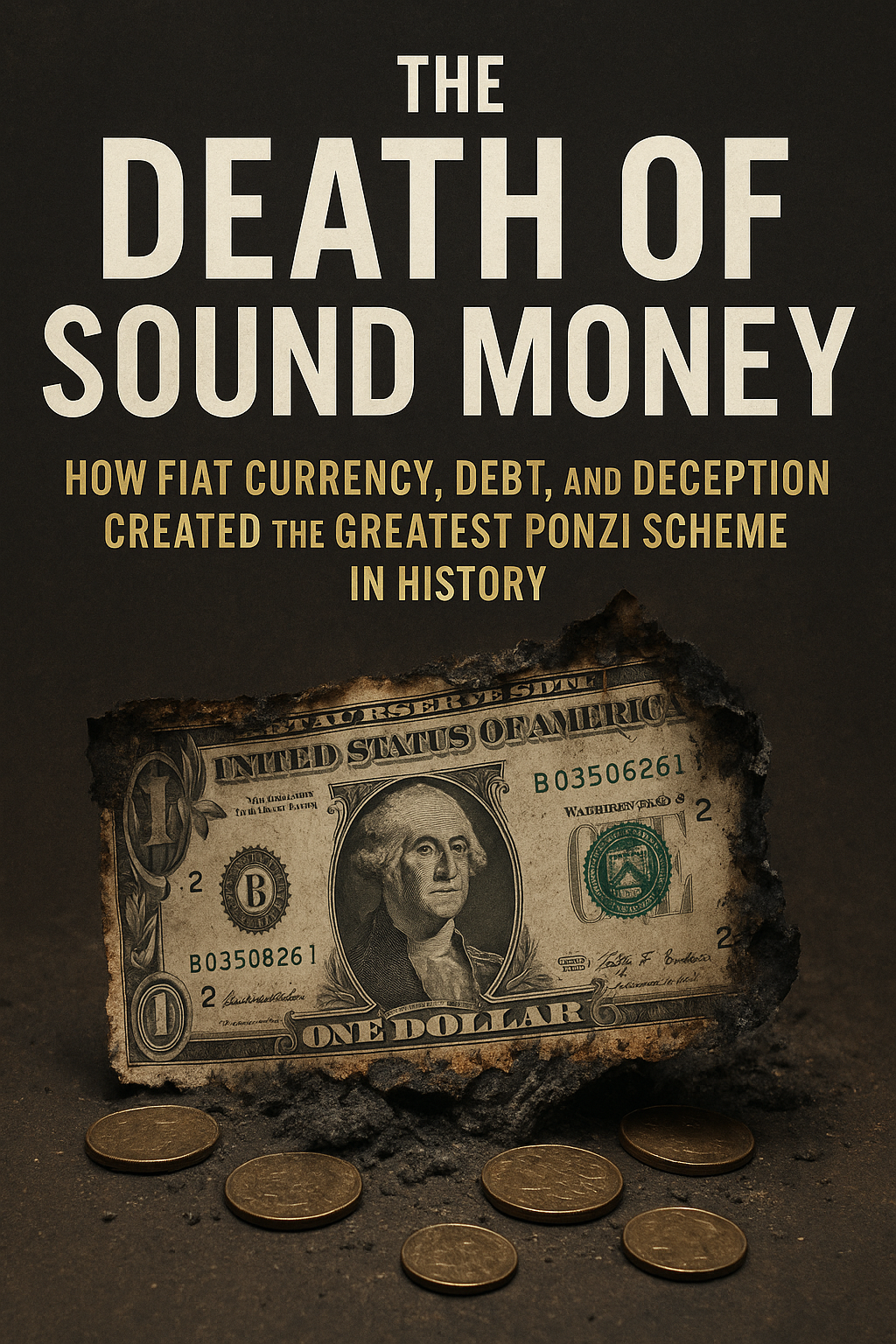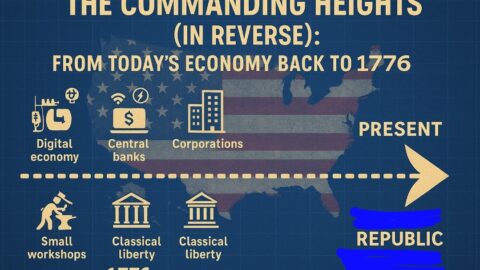Introduction
August 15, 1971, marked a financial turning point for the modern world. With President Richard Nixon’s suspension of the dollar’s convertibility into gold, the last thread tying the global economy to a tangible standard was severed. What followed was a shift from monetary discipline to an era of debt, speculation, and exponential money creation, all under the guise of stability and growth. But the foundation of the system was fatally flawed: it required ever-increasing borrowing to sustain itself. This is the anatomy of a modern Ponzi scheme.
1. The End of the Gold Standard
- Nixon claimed suspending the dollar-gold convertibility was temporary. It never returned.
- The Bretton Woods system had tied currencies to the dollar, and the dollar to gold ($35/oz).
- As US deficits grew (Vietnam War, Great Society), foreign nations began demanding gold.
- To prevent depletion of gold reserves, convertibility was halted.
- From that moment forward, global currencies were backed by nothing.
2. Fiat Currency: Faith-Based Finance
- “Fiat” means “let it be done” — currency by government decree.
- No intrinsic value. No restraint.
- Circulation depends on confidence and force.
- Once confidence erodes, the entire system teeters.
3. Inflation: The Hidden Tax
- Without gold backing, governments could print at will.
- Each new dollar dilutes existing purchasing power.
- Real wages stagnated. Cost of living increased.
- Families moved from one income to two, then to borrowing to survive.
- This wasn’t prosperity — it was inflation disguised as growth.
4. A Perpetual Deficit System
- Post-1971, the US has never run a sustained surplus.
- Government debt rose exponentially.
- The Federal Reserve “creates” money by purchasing Treasury bonds.
- These bonds are IOUs — promises to repay, with interest.
5. Debt-Based Currency = A Ponzi Scheme
- Like any Ponzi scheme, new money must be borrowed to pay off old debts.
- The system relies on ever-growing debt levels.
- When borrowing slows, defaults begin, and the house of cards teeters.
6. Global Trade and the Dollar Trap
- Countries sell goods to the US and accumulate dollars.
- To avoid currency appreciation, they reinvest in US debt.
- This creates artificial demand for US bonds — perpetuating the Ponzi.
- Should they stop reinvesting, the system collapses.
7. The Illusion of Recovery
- Post-2008, governments issued bailouts, not reform.
- Bad debts were hidden, not cleared.
- The system was patched, not fixed.
8. CPI Manipulation and Public Deception
- Inflation figures are underreported using techniques like hedonic adjustments.
- Real inflation is likely much higher than official numbers.
- Underreporting keeps Social Security and other obligations artificially low.
9. Industrial Hollowing and Wage Destruction
- Currency devaluation leads to offshoring: cheaper labor abroad.
- US cities lost manufacturing; jobs replaced by service economy.
- Standard of living for blue-collar workers collapsed.
10. The Borrowing Ladder: Income → Savings → Debt → Despair
- First: dual incomes.
- Then: depletion of savings.
- Then: consumer debt explosion.
- Now: borrowing just to survive.
11. The Endgame: Hyperinflation
- When debt becomes unpayable, governments print more.
- If confidence in currency fails, people flee fiat for tangible goods.
- Panic leads to rapid currency devaluation.
- History has shown that all fiat systems eventually collapse.
12. The Gold Suppression Strategy
- Gold is the enemy of fiat currency.
- Central banks manipulate gold prices to protect the illusion of dollar strength.
- Techniques: central bank sales, leasing gold to bullion banks, derivative markets.
- Admitted by figures like Alan Greenspan.
13. The Coming Bullion Shortage
- If every gold holder demanded physical delivery, supply would fail.
- Bullion banks have oversold claims to gold.
- A default in the gold market would expose massive fraud.
14. Why Gold Threatens Government Power
- Gold limits spending. Fiat enables unlimited wars, welfare, and corruption.
- Sound money returns power to the people.
- Gold-backed money enforces accountability.
15. Currency Collapse = Global Contagion
- The US dollar is the reserve currency.
- If the dollar fails, global currencies collapse with it.
- The fiat graveyard is full of failed currencies. The dollar may be next.
16. The Greatest Wealth Transfer in History
- When the system breaks, those holding fiat lose everything.
- Those holding real assets — gold, silver, land, food — preserve wealth.
- Crisis becomes opportunity for the informed.
17. Solutions: Return to Real Money
- Gold and silver are time-tested.
- Real money requires effort to mine and cannot be created from nothing.
- Educate yourself. Don’t trust politicians or central bankers.
- Individuals can return to gold standards privately.
18. A Future Worth Building
- Collapse is painful, but necessary.
- The end of the Ponzi scheme is the beginning of monetary freedom.
- Real reform starts with personal responsibility, financial education, and sound money.
Conclusion
The fiat system born in 1971 was built on illusion, deceit, and unsustainable debt. Like every Ponzi scheme, it must eventually collapse. The only question is when. History tells us this: every fiat currency has failed. And when the world’s reserve currency fails, the shock will be global. But in every collapse lies the seed of rebirth. A return to real money, real value, and real freedom is not only possible—it is necessary.
Educate. Prepare. Act. Because the time bought with deception is running out.







